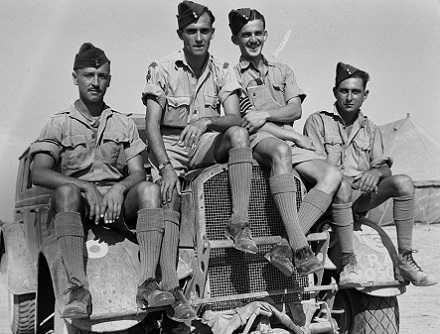The Second World War (1939-1945) - part 14

FOCUS ON... THE MOSQUITO
One of the more versatile aircraft of the Second World War, the de Havilland DH 98 Mosquito had a maximum speed of 380 miles per hour (612 kilometres per hour).
The “Mossie” was made almost entirely of spruce and ply wood, materials that were not as scarce or as regulated as other aircraft materials. Irreverent airmen dubbed it “the wooden wonder” or “the termite’s dream”.
With aerodynamic lines and two Rolls-Royce Merlin engines, it was envisioned as a light bomber but it also served in night fighter, anti-shipping, reconnaissance and even transport roles. The bomber and reconnaissance variants carried no defensive armaments, relying instead on high speed for protection. De Havilland Canada manufactured more than 1,000 Mosquitos on Downsview, Ontario.
The Royal Canadian Air Force (RCAF) flew Mossies from 1943 until 1951.
DID YOU KNOW…
To avoid confusion among Commonwealth units, the RCAF, Royal Australian Air Force and Royal New Zealand squadrons were renumbered, beginning in 1941. The RCAF was allocated the 400-449 block of numbers. Canada’s No. 1 Squadron, for instance, became 401 Squadron.
There is currently one flying squadron in Canada that is not a 400 series squadron — 103 Search and Rescue Squadron in Gander, Newfoundland and Labrador, which replaced 103 Rescue Unit in 1957.
FOCUS ON… NORTH AFRICA

RCAF airmen in North Africa.
Outside of the Soviet German war on the Eastern Front, the largest tank battles in the Second World War occurred in North Africa, where the Commonwealth forces of Field Marshal Bernard Montgomery squared off against the Afrika Korps of German Field Marshal Erwin Rommel.
Canadians in 417 Squadron left England in April 1942 to fly with the Royal Air Force's (RAF) “Desert Air Force”, which harassed the Afrika Korps troops and disrupted the German supply lines — the key element in winning or losing in the desert. By March 1943, the mighty Afrika Korps was defeated and Rommel returned to Italy.